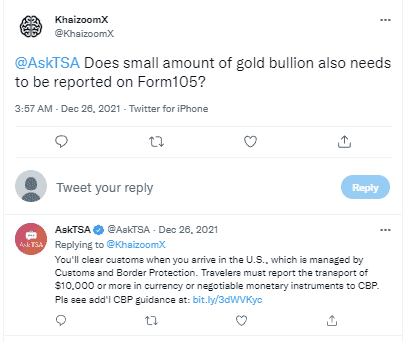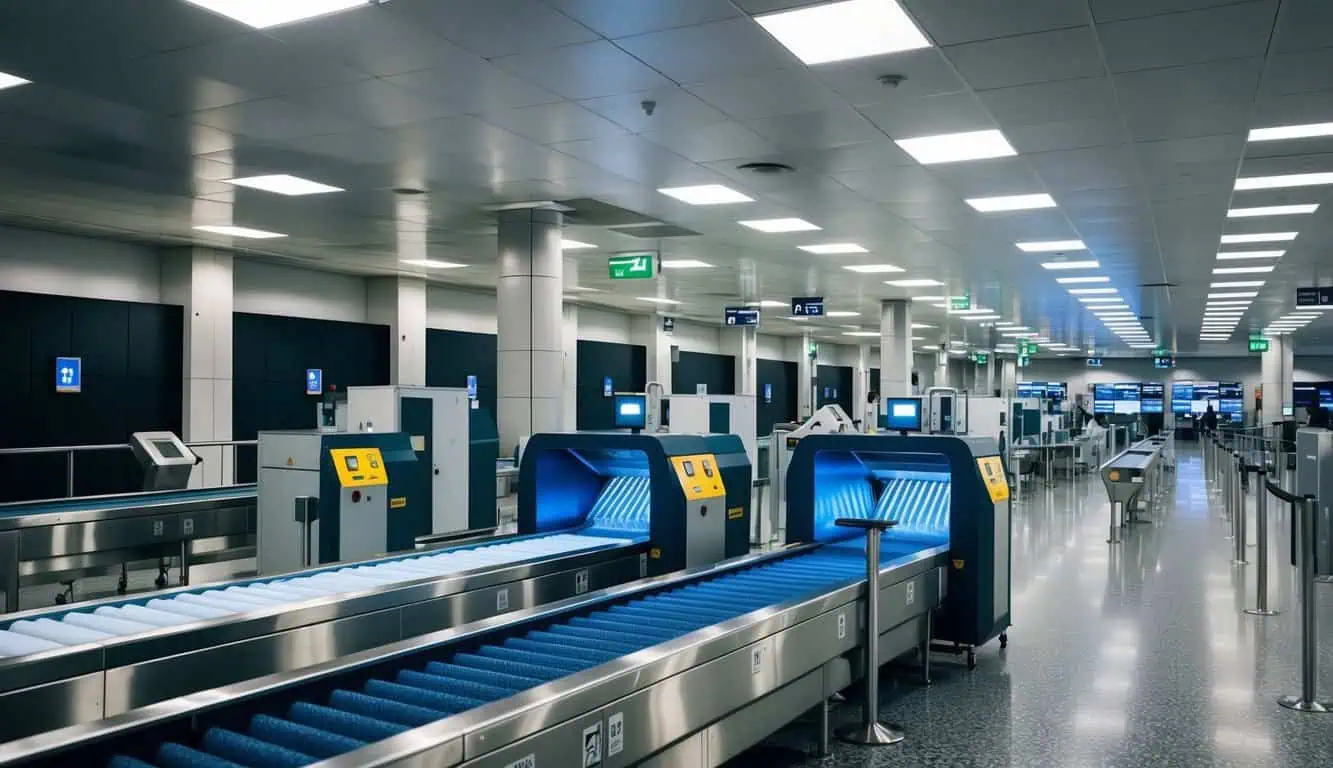Are you wondering if you can take metal on a plane? This question is more common than you might think, whether about everyday items like keys and coins or more unusual things like iron ore or saucepans.
Can you bring metal on a plane, and what are the exceptions? It’s a question worth exploring, especially since the answer isn’t as straightforward as a simple yes or no.
Metal objects are ubiquitous, and their presence in our luggage is almost guaranteed. But are certain metal objects prohibited or specific conditions under which they can be carried?
Well, we’ll be going over:
- What metal items are generally allowed in carry-on and checked luggage?
- Are there specific metal objects that are restricted or completely banned from flights?
- How do airport security protocols handle different metal items, and what should passengers expect?
Let’s unravel these metal mysteries!

The Quick Answer: Can I bring metal on a plane? You can bring metal on a plane. Most metal items like jewelry, keys, and watches are allowed in both carry-on and checked baggage. However, items such as knives and firearms are subject to specific TSA rules and restrictions. Always check TSA guidelines and airline regulations before traveling.
Contents
Can you bring metal on a plane?
Yes, you can bring metal on a plane. According to the Transportation Security Administration (TSA), metal objects such as jewelry, watches, and keys are permitted in carry-on and checked baggage.
However, certain metal items like knives and firearms have specific rules and restrictions. Checking with the TSA guidelines and your airline for specific regulations before traveling is always recommended.
Can you take metal in carry on luggage through airport security?
You can take almost any metal object through airport security provided it cannot be used as a weapon or isn’t a weapon, of course.
So obviously, you cannot take a gun, a machete, a sword, a baton, a pocket knife, scissors (with blades longer than 4″) or any other similar weapon. However, it also includes things such as a large metal bar, a metal baseball bat and any other item that could be used as a weapon, even though its legitimate use is not for that purpose.
There is one strange exception. While you can take saucepans and other metal cookware, this is only permitted if they are not made of cast iron. Cast iron cookware must go in checked bags.

Most things like the above can go in checked bags in most cases.
If you want to carry on metal water bottle then this must be empty, otherwise it will be confiscated. You can fill it out after security.
Below are three examples of the TSA’s replies to passengers enquiring about carrying metal objects, including a piece of a crashed aircraft, a saucepan and pieces of steel, that, in most cases, can go in a carry on bag.

Steel blocks ……

However, in this 4th example, a small steel rod just over 7 inches long, the passenger is told it must go in checked baggage. This seems ridiculous, as you can take metal knitting needles longer than this in checked bags. What is the difference?

Do you have to take metal out of your carry-on?
Metal items can stay in your carry on bag when passing through the x-ray screening at airport security.
You may be pulled aside for additional screening by a TSA officer if the x-ray operator cannot identify what an object is or, if it is hollow, then to carry out a manual search to ensure there is nothing inside that is not allowed that may not show up on the x-ray image.
Can I bring metal plates on a plane?
Metal plates can be taken through airport security and on a plane. They can also be packed in your checked bags.
The only restriction will be the size.
If the metal plate, such as a license plate, is small enough to fit in your carry on bag then it won’t be an issue.
If it is too large to easily fit in an overhead bin in the cabin, it may have to go as checked baggage (at extra cost). You should check with your airline to find out whether your metal plate is an acceptable size.

Can you bring metal parts on a plane?
Metal parts are permitted on plane in checked bags and generally in carry on bags too. The only exceptions in carry on are likely to be anything that can be used as a weapon.
I regularly bring small metal car parts in my carry on from the UK.
Is metal allowed in checked luggage?
You can take a wider range of metal items in your checked bags than you can in a carry on bag.
This is because, for example, anything that might be used as a weapon (if sharp or heavy) is not available during a flight if it is in the aircraft’s hold on a checked bag so is not a potential threat to the flight’s security.
Can you bring gold on a plane?
Passengers can take gold as jewelry or a wedding ring on board a flight. But what about larger quantities of gold?
Gold is heavy, so there would certainly be a limit governed by how much weight you could carry in a cabin bag. If you filled a maximum-size cabin bag with gold, even the world’s strongest man couldn’t lift it.
Can you bring gold coins on a plane?
You can bring gold coins on a plane. If you are carrying more than a few, it is advised that you advise the TSA that you would like a private screening so that others will not know what you are carrying.

Can you bring gold bars on a plane?
You would think that anyone who can afford to carry gold bullion/bars would probably fly on a private jet rather than on a commercial flight, but apparently, some do.
The same applies to gold bars and coins, so you would be advised to request the TSA for a private screening.
Importing gold into the US
Although there appears to be no duty payable on gold, US customs state the following:
There is no duty on gold coins, medals or bullion but these items must be declared to a Customs and Border Protection (CBP) Officer. Please note a FINCEN 105 form must be completed at the time of entry for monetary instruments over $10,000. This includes currency, ie. gold coins, valued over $10,000.
https://help.cbp.gov/s/article/Article-1594

Summary
One common concern many travelers have is whether metal objects are allowed on planes, particularly in hand luggage. It is important to note that while metal is generally permitted in flight, it is subject to certain restrictions and guidelines. So, can we carry metal in flight? Yes, you can carry metal on a plane, but there are specific rules to follow.
Regarding hand luggage, most metal objects are allowed as long as they comply with the airline’s regulations. However, sharp or pointed metal items such as knives or scissors with metal blades might be prohibited to ensure passenger safety. So, is metal allowed in hand luggage? Generally, yes, but it’s important to check the specific airline’s restrictions beforehand.
As for steel plates or larger metal objects, the allowance may differ. While smaller metal items are generally permitted, larger steel plates might require special arrangements due to their weight, size, or potential impact during turbulence. Therefore, you should contact your airline if you plan to carry steel plates in flight.
Related posts:
If you are flying with metal implants after surgery, you may wish to read –
Will surgical screws set off metal detectors?
Can I wear an underwire bra through airport security?
Can you wear jewelry through TSA checkpoints
Metal frequently asked questions
Can you put aluminum foil in your suitcase?
You can put a roll of aluminum foil in your suitcase and things wrapped in foil. However, when the suitcase is scanned, there is a higher probability that security officers will open it for a manual check, which may mean your bag is delayed and you may miss your flight.
Can airport scanners see through metal?
The X-ray scanners at the airport cannot see through many metals as they give an opaque image on the screen. In this case, a carry on bag will be put aside for manual screening.
Can you bring quarters on a plane?
You can bring quarters and any other coins on a plane either in your carry on or checked bags. If they are in your pocket, then they will set off the metal detector, so you need to remove them and either place them in your carry on bag or in the security bin before being screened.

I have been traveling around the world by air since the early 70s and living overseas too. I worked for British Airways for a number of years and I am also a private pilot. About Me


